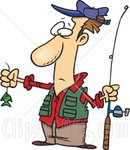 At the time of breeding, it is easier to see the changes in the male goldfish. The male develop breeding tubercles that are white and of the size of pin head. The female goldfish cannot be recognized easily. The female has a bigger and full abdomen. When the male goldfish is ready to breed, the fish performs the ritual of spawning chase. The male swim closely following the female and hit her abdomen repeatedly for several hours.
At the time of breeding, it is easier to see the changes in the male goldfish. The male develop breeding tubercles that are white and of the size of pin head. The female goldfish cannot be recognized easily. The female has a bigger and full abdomen. When the male goldfish is ready to breed, the fish performs the ritual of spawning chase. The male swim closely following the female and hit her abdomen repeatedly for several hours.The eggs should be transferred to another goldfish aquarium immediately. New goldfish aquarium contains water maintained at the same temperature. Before this process, the goldfish eggs are normally rinsed with water with the same temperature of the previous tank. The optimum temperature is 20ºC for breeding. Transferring at once is possible as the goldfish eggs are fertilized already.
The fertile goldfish eggs look clearer but the unfertile eggs look furry. The danger of fungal attack is imminent on the unfertile eggs can be on the fertile eggs also. To avoid this goldfish eggs are observed with rapt attention. The water can be only six inches deep. The fish fry after hatching can not take more water pressure. To ensure this the water can be only about six inch deep. This water being shallow allows the fish fry to swim with ease.
It is normal for the fish fry to sink down to the bottom of the tank once the goldfish eggs are hatched. The new born fish are attached with full yoke sac that is translucent. This sac will sustain the fish fry for twenty four hours. After twenty four hours, the fish fry swim around in search of food.
If you want to learn more about goldfish or more specifically goldfish eggs then check out http://www.secretsofgoldfish.com
Article Source: http://EzineArticles.com/?expert=Dane_J_Stanton





